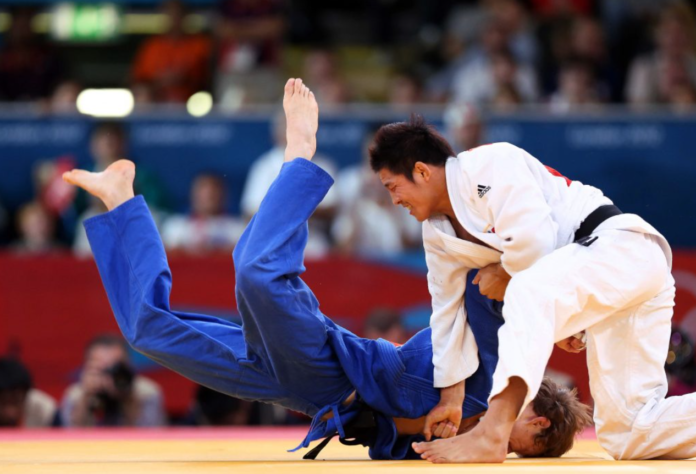
As a fighter in BJJ, MMA, or wrestling, it’s really crucial to be able to protect yourself in any situation. Martial arts are good for staying in shape, getting better at fighting, having fun, and protecting yourself if you ever end up in a street fight.
But what are the best martial arts for self-defense situations? Which ones will give you the edge in a real-life scenario? How can you choose the right martial art for your goals, preferences, and budget?
In this article, we’ll explore the most popular martial arts for self-defense, trying to figure out what the most effective martial arts are. We’ll also look at the pros and cons of each martial art, how to train them, and where to find them.
Let’s get started!
Taekwondo
Taekwondo is a Korean martial art that was founded by Choi Hong Hi and other army officials and martial artists after World War II. It is based on Choi’s Theory of Power, which states that speed is more important than mass for generating powerful strikes. Therefore, Taekwondo emphasizes kicks over punches, since legs can deliver faster and heavier blows than arms.
Advantages and Disadvantages of Taekwondo for Self-Defense
Taekwondo helps you move your body better. It makes you more flexible, balanced, and coordinated. It also teaches you how to use your legs as weapons and how to defend against kicks. Taekwondo is also one of the most popular and widely available martial arts in the world, so you won’t have trouble finding a school or instructor near you.
A clear disadvantage of Taekwondo is the fact that it relies too much on kicks, which can be impractical in close quarters or uneven terrain. It also lacks effective techniques for grappling, clinching, and ground fighting. Taekwondo also tends to be more sport-oriented than street-fighting-oriented, meaning that it follows rules and regulations that may not apply in real-life scenarios.
How to Train Taekwondo for Self-Defense
If you want to train in Taekwondo for self-defense, you should look for a school that teaches realistic applications of the techniques and offers regular sparring with different opponents. To improve your skills in Taekwondo, try learning as many other martial arts as you can, especially ones that focus on grappling skills or using your hands to hit.
Judo
Judo is a type of fighting that started in Japan a long time ago, made by a man named Jigoro Kano. It is one of the most popular Japanese martial arts, derived from various styles of Ju-Jitsu, which are ancient forms of unarmed combat. Judo means ‘the gentle way’ and it focuses on using leverage, balance and timing to throw or immobilize your opponent.
Advantages and Disadvantages of Judo for Self-Defense
Some of the advantages of Judo are that it teaches you how to use your opponent’s strength and momentum against them and how to control them on the ground with pins or submissions. It also develops your strength, endurance, reflexes, and mental toughness. Judo is also an Olympic sport and one of the most practiced martial arts in the martial arts world, so you won’t have trouble finding a school or instructor near you.
Judo skills can be hard to master because you need to practice a lot and be skillful enough to throw someone safely and well. It also has limited striking techniques compared to some other arts on our list and may not work well against multiple attackers or armed assailants.
How to Train Judo for Self-Defense
If you want to train Judo for self-defense, you should look for a school that teaches both standing and ground techniques and has a focus on Judo techniques which are practical for self-defense situations. Since it is the official Japanese martial art of the Tokyo police department, this should not be a problem.
You should also learn how to adapt your throws to different situations and environments and how to defend against strikes or weapons.
Boxing
Boxing is one of the oldest and most universal forms of combat sports. It dates back to ancient times when people fought with their fists for entertainment or survival. Boxing involves using your fists to strike your opponent’s head or body while avoiding their attacks.
Advantages and Disadvantages of Boxing for Self-Defense
Boxing helps you learn how to hit hard, fast, and precisely. It also teaches you how to protect yourself by moving your feet, dodging with your head, and blocking punches. It also improves your cardio, stamina, coordination, and confidence. Boxing is one of the most popular and accessible combat sports in the world, so you won’t have trouble finding a gym or instructor near you.
A distinct drawback of the sweet science of Boxing is that it only focuses on one aspect of fighting (punching) and neglects other areas such as kicking, grappling, or weapon defense. It also exposes your face to potential injuries such as cuts, bruises, or concussions.
How to Train Boxing for Self-Defense
Training Boxing for self-defense means you should look for a boxing gym that teaches realistic scenarios on top of sports tactics and sparring. You should also learn how to use your elbows, knees, or other improvised weapons if necessary and how to deal with multiple attackers or armed assailants in addition to fancy footwork and life-saving bobs and weaves.
Wrestling
Wrestling is one of the oldest grappling arts and forms of human competition and combat. It involves using various techniques such as takedowns, throws, pins, or submissions to control your opponent on the ground or standing up.
Advantages and Disadvantages of Wrestling for Self-Defense
Some of the advantages of Wrestling are that it teaches you how to take down your opponent quickly and effectively and how to dominate them on the ground with pressure or submissions. It also develops your strength, speed, flexibility, and endurance. Wrestling is one of the most common backgrounds for an MMA fighter, so you won’t have trouble finding a gym or instructor near you.
A drawback of this grappling martial art is that it does not teach any striking techniques or weapon defense, and it may not work well against multiple attackers or standing opponents.
How to Train Wrestling for Self-Defense
If you want to train in Wrestling for self-defense, you should look for a gym that teaches both freestyle and Greco-Roman styles and also dabble in some catch wrestling if you can find it. Learning to adapt your takedowns to different situations and environments and defending against strikes or weapons gives wrestling a realistic self-defense angle.
Muay Thai
Muay Thai is a martial art originating in Thailand. It was developed for battlefield purposes by Siamese warriors over centuries of warfare. It is based on using eight limbs (fists, elbows, knees, and shins) as weapons and targets to strike your opponent’s head, body, and legs. Muay Thai is also known as Thai boxing or The Art of Eight Limbs.
Advantages and Disadvantages of Muay Thai for Self-Defense
Muay Thai employs the use of many strategic parts of your body as weapons to strike with and defend yourself. They include kicks, punches, elbows, and knees, as well as clinching tactics and trips. It also improves your cardio, stamina, power, and toughness. Muay Thai is one of the most popular and respected martial arts in the world, so you won’t have trouble finding a gym or instructor near you.
Some of the disadvantages of Muay Thai are that it exposes your legs to potential injuries such as sprains, fractures, or cuts. It also requires a lot of stamina and conditioning to maintain a high pace and intensity.
How to Train Muay Thai for Self-Defense
If you want to train Muay Thai for self-defense, you should look for a gym that teaches realistic scenarios. The original art behind Muay Thai, known as Muay Boran was brutally effective, so anyone trained in it should be your first choice.
Brazilian Jiu-Jitsu
Brazilian Jiu-Jitsu is a Brazilian martial art that was developed by brothers Carlos, and Hélio Gracie, after Carlos learned mixed grappling techniques from a Japanese judoka named Mitsuyo Maeda in 1925. BJJ is one of the grappling-based martial arts, with a strong focus on ground fighting, and submission holds. It focuses on using leverage, technique, and timing to overcome larger and stronger opponents.
Advantages and Disadvantages of Brazilian Jiu-Jitsu for Self-Defense
Brazilian Jiu-Jitsu is uniquely effective in teaching you how to defend yourself against any size or strength of the opponent and how to use various BJJ techniques like chokes, joint locks, and holds to make them submit or pass out. It also improves your flexibility, balance, coordination, and mental toughness. Brazilian Jiu-Jitsu is one of the most practiced and respected martial arts in the world, so you won’t have trouble finding a school or instructor near you.
Some of the disadvantages of Brazilian Jiu-Jitsu are that it does not teach any striking techniques or weapon defense and may not work well against multiple attackers or standing opponents.
How to Practice BJJ for Self-Defense
If you want to train Brazilian Jiu-Jitsu for self-defense, find a school that covers both Gi and No-Gi classes. A school with a specific focus on self-defense training, which is at the roots of this effective martial art is an obvious best choice. The original Gracie Jiu-Jitsu approach included a lot of scenarios that teach you how to escape from bad spots and how to defend yourself against strikes or weapons.
Krav Maga
Krav Maga is an Israeli martial art that was developed by Imi Lichtenfeld and other army officials and martial artists for the Israeli Defense Forces. It is based on a combination of self-defense techniques from various martial arts. Krav Maga means ‘contact combat’ and it focuses on real-world situations and extreme efficiency.
Advantages and Disadvantages of Krav Maga for Self-Defense
Krav Maga is an extremely effective combat system, as it teaches you how to protect yourself by using everything in your reach as a weapon and how to defend against different kinds of attacks like punches, grabs, and weapons.
It also improves your awareness, reflexes, aggression, and confidence. Krav Maga is one of the most respected and widespread martial arts in the world, so you won’t have trouble finding a certified instructor or school near you.
Krav Maga has some drawbacks because it can be very violent and not good for everyone. It also requires a lot of training and dedication to master the skills and mindset.
There is a significant issue with certain Krav Maga schools that enroll individuals who lack any athletic abilities. Consequently, these schools structure their curriculum based on the limited capabilities of their students, resulting in a subpar training experience. The absence of authentic sparring and the overall lack of intensity make it unsatisfactory for individuals who possess genuine fighting skills and a genuine desire to learn.
In that case, Jiu-Jitsum boxing, MMA, etc. are MUCH BETTER for any kind of fighting and self-defense, and unfortunately, that’s the case in 99% of Krav Maga schools today.
Check out krav maga instructionals and courses to learn krav maga at home.
How to Train Krav Maga for Self-Defense
If you want to train Krav Maga for self-defense, you should look for a certified instructor or school. Krav Maga is designed specifically for self-defense, so the only thing to consider when enrolling in a club teaching the civilian version is that it is not a scam or McDojo.
Sambo
Sambo is an excellent martial art that was created by Vasili Oshchepkov and Viktor Spiridonov in the early 20th century for Russian military needs. It is derived from various styles of folk wrestling, judo, Ju-Jutsu, and other martial arts. Sambo means ‘self-defense without weapons’ and it involves using throws, takedowns, locks, chokes, and strikes.
Advantages and Disadvantages of Sambo for Self-Defense
Some of the advantages of Sambo are that it teaches you how to use your body weight and leverage to control your opponent and how to apply various submissions and strikes to end the fight quickly. It also develops your strength, speed, flexibility and endurance. Sambo is an official sport in Russia and many former Soviet countries, so you won’t have trouble finding a qualified instructor or club near you.
Some of the disadvantages of this Russian martial art are that it does not teach any weapon defense or multiple attacker scenarios and that it may not be widely available or recognized in some countries.
How to Train Sambo for Self-Defense
If you want to train Sambo for self-defense, you should look for a qualified instructor or club that teaches both sport and combat sambo and spars regularly with different opponents. Combat Sambo gets the nod over sport Sambo for effective self-defense.
Filipino Kali
Filipino Kali is a type of martial art from the Philippines that focuses on using weapons like sticks, knives, and blades. They may also use other items they can find as weapons. The term Kali is most likely derived from the pre-Hispanic Filipino term for blades and fencing, Kalis. Filipino Kali is influenced by various cultures and martial arts such as Indonesian silat, Chinese kung fu, Spanish fencing, and native wrestling.
Advantages and Disadvantages of Filipino Kali for Self-Defense
Some of the advantages of Filipino Kali are that it teaches you how to use any weapon or object as a weapon and how to defend against armed or unarmed attackers. It also improves your coordination, reflexes, timing, and awareness. Filipino Kali is one of the most respected and widespread martial arts in the world, so you won’t have trouble finding a certified instructor or school near you.
Filipino Kali is not a very popular martial art, making it difficult to find places to practice in some countries. It also requires a lot of practice and discipline to master the skills and techniques.
How to Train Filipino Kali for Self-Defense
While most Kali schools teach a version that focuses on self-defense if you truly want to be effective, find a school that works on all three aspects of Kali: stick fighting, knife fighting, and unarmed close-quarters combat.
Mixed Martial Arts (MMA)
MMA is a type of sport where people fight using moves from several martial arts like Western boxing, muay thai, wrestling, judo, and Brazilian Jiu-Jitsu. MMA was popularized by the UFC (Ultimate Fighting Championship) in 1993, which showcased fighters from different disciplines competing against each other under minimal rules.
Advantages and Disadvantages of MMA for Self-Defense
The best thing about mixed martial arts is that it teaches you to have an open mind and mix and combine different effective techniques from different fighting styles. It also develops your endurance, strength, speed, and agility. You won’t have trouble finding a local gym or instructor by searching online or asking around.
Disadvantages of MMA include the long training time and dedication to master multiple skills and that it exposes you to a lot of injuries and risks. It also may not be suitable for everyone, especially those who are not comfortable with full-contact fighting or blood.
How to Train MMA for Self-Defense
MMA fighters are well-prepared for self-defense, regardless of where they train. Any gym that teaches a well-rounded curriculum of striking, grappling, and conditioning will do the trick even if you do not want to be a competitive MMA fighter.
The Best Martial Art for Self-Defense for Beginners
Based on the information we have provided in this article, we can suggest one great martial art that may be suitable for most beginners who want to learn self-defense tactics quickly and effectively.
That martial art is Krav Maga.
Krav Maga is an Israeli martial art that was developed for the Israeli Defense Forces. It is based on a combination of techniques from judo, karate, boxing, and wrestling. Krav Maga means ‘contact combat’ and it focuses on real-world situations and extreme efficiency.
Here is why Krav Maga is the most effective martial art for self-defense for people with no combat sports experience:
- It teaches you how to use all parts of your body as weapons and how to defend against strikes, grabs, chokes, weapons, and multiple attackers.
- It does not require any special equipment or uniform. You can train in your regular clothes and shoes.
- It does not have any rules or regulations. You can use anything.
- It does not rely on any specific physical attributes. You can use your speed, strength, size, or flexibility to your advantage.
- It does not take long to learn the basics. You can learn the most essential techniques in a few weeks or months.
- It improves your awareness, reflexes, aggression, and confidence. You will learn how to react quickly and decisively in any scenario.
Of course, Krav Maga is not perfect or flawless. It has some drawbacks and limitations as well, despite being a highly effective martial art. Some of them are:
It can be very dangerous and brutal. You may injure yourself or others during training or sparring.
It may not be suitable for everyone. Some people may find it too violent or stressful.
It requires a lot of training and dedication to master the skills and mindset. You need to train regularly, consistently and realistically to develop your proficiency.
However, we believe that the benefits of Krav Maga outweigh the drawbacks for most beginners who want to learn self-defense.
Conclusion
As you can see, there are many martial arts that can help you defend yourself in various situations. However, no martial art is perfect or superior to another. The best martial art for self-defense depends on your personal goals, preferences, and circumstances.
Whatever martial art you choose you need to train regularly, consistently, and realistically to develop your fighting skills, confidence, and awareness. You also need to avoid unnecessary conflicts and use your common sense and judgment to stay safe.
Thank you for reading and happy training!
FAQs about The Best Martial Arts for Self-Defense:
1. What are the best martial arts for self-defense in 2023? In this article, we explore the top 10 martial arts for self-defense, covering their advantages, disadvantages, and suitability for various situations.
2. Why is self-defense important in martial arts? Self-defense is a critical aspect of martial arts, ensuring personal safety and the ability to protect oneself in real-life scenarios.
3. How do I choose the right martial art for my self-defense goals? The article offers insights into each martial art’s strengths and limitations, helping you make an informed decision based on your preferences, circumstances, and objectives.
4. What are the advantages of Taekwondo for self-defense? Taekwondo enhances flexibility, coordination, and kicking techniques. However, it may have limitations in close-quarters combat or grappling situations.
5. Is Boxing suitable for self-defense? Boxing trains powerful punches and defensive skills. While effective for striking, it lacks techniques for grappling and weapon defense.
6. What makes Brazilian Jiu-Jitsu effective for self-defense? Brazilian Jiu-Jitsu specializes in ground fighting and submissions, offering techniques to defend against larger opponents. However, it doesn’t cover striking or weapon defense.
7. How does Krav Maga stand out for self-defense? Krav Maga focuses on real-world scenarios, allowing practitioners to use anything as a weapon and defend against various attacks. It’s efficient but intensive in training.
8. Which martial art is recommended for beginners seeking self-defense skills? For beginners, Krav Maga is suggested due to its practicality, versatility, and quick learning curve for effective self-defense.
9. Are there disadvantages to practicing Muay Thai for self-defense? Muay Thai offers powerful striking techniques using eight limbs, but practitioners should be aware of potential leg injuries and the need for stamina and conditioning.
10. How can I find the right school or instructor for self-defense training? The article advises seeking certified instructors or schools that prioritize realistic scenarios and self-defense applications for the chosen martial art.
11. What is the significance of Mixed Martial Arts (MMA) in self-defense? MMA combines techniques from various martial arts, providing a comprehensive skill set. However, it requires dedication, covers multiple areas, and carries injury risks.
12. Can I practice Filipino Kali for self-defense if it’s less popular in my area? Filipino Kali focuses on weapons and improvised objects. While it may be less accessible, finding a school that covers stick fighting, knife fighting, and close-quarters combat can be beneficial.
13. Is self-defense training suitable for everyone? While self-defense training can be beneficial for most individuals, personal preferences and comfort levels should be considered, especially for more intense martial arts like Krav Maga.
14. How long does it take to learn self-defense techniques? Learning timelines vary based on martial art complexity and personal commitment. Some basics can be learned in weeks or months, while mastery requires ongoing practice and dedication.
15. Can I apply martial arts for self-defense in real-life situations? Yes, with proper training and practice, the techniques learned in these martial arts can be applied effectively in real-life self-defense scenarios.
16. Is it necessary to practice more than one martial art for self-defense? While not necessary, learning various martial arts can enhance versatility and adaptability, making you better prepared for a wide range of situations.
17. How do I get started with self-defense training? To begin self-defense training, research local schools or instructors specializing in your chosen martial art and inquire about beginner-friendly classes or programs.
18. Can I use martial arts for self-defense against multiple attackers? While some martial arts emphasize techniques against multiple attackers, it’s essential to remain aware of your surroundings and prioritize safety when facing such situations.
19. Are there any age restrictions for learning self-defense through martial arts? Many martial arts schools offer classes for all age groups, making self-defense training accessible to children, teenagers, adults, and seniors.
20. Where can I find more detailed information about each martial art for self-defense? The article provides an in-depth overview of each martial art’s advantages, disadvantages, and training aspects. For comprehensive details, consider seeking guidance from certified instructors or specialized resources.


![Darce Choke Encyclopedia – Origins, Mechanics and Variations [2025] BJJ, choke, Brabo, BJJ Darce Choke, D'arce Choke, Darce BJJ Choke](https://bjj-world.com/wp-content/uploads/2017/11/JungPoirierLeeYahoo-218x150.jpg)







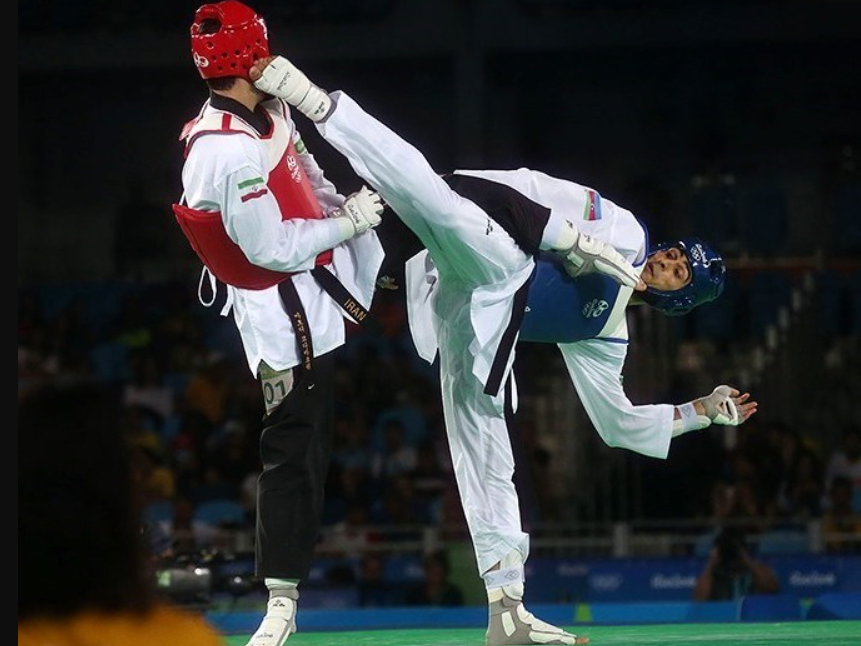
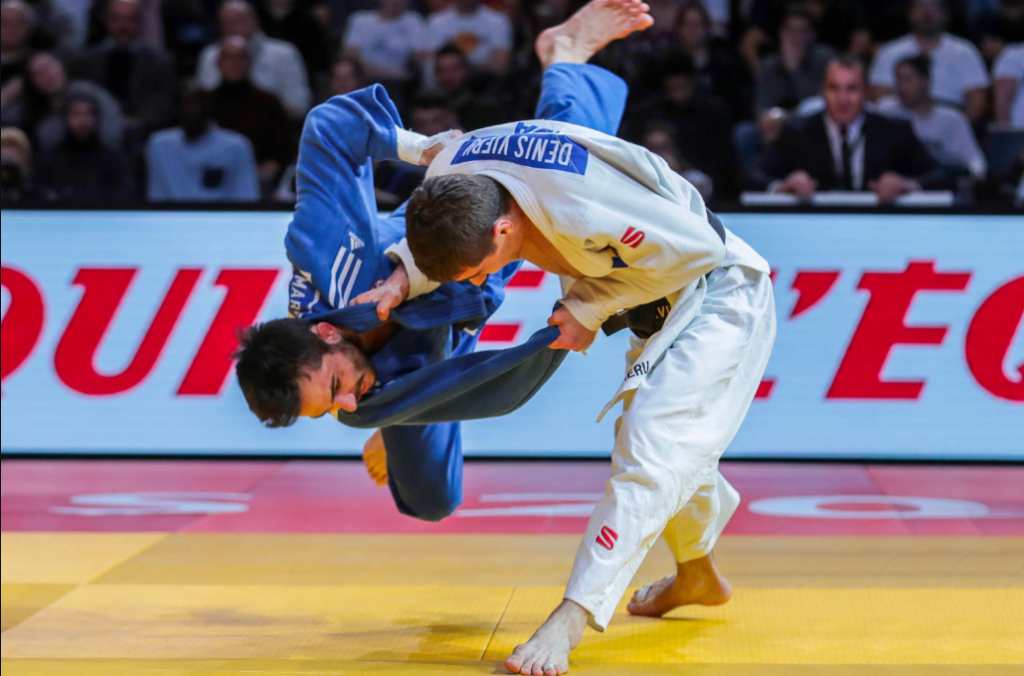
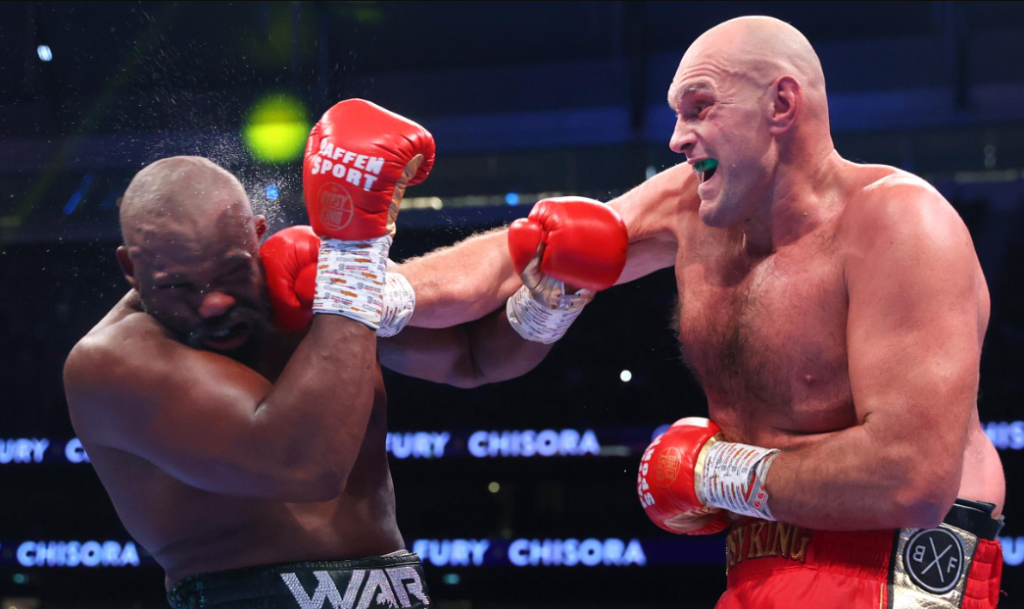


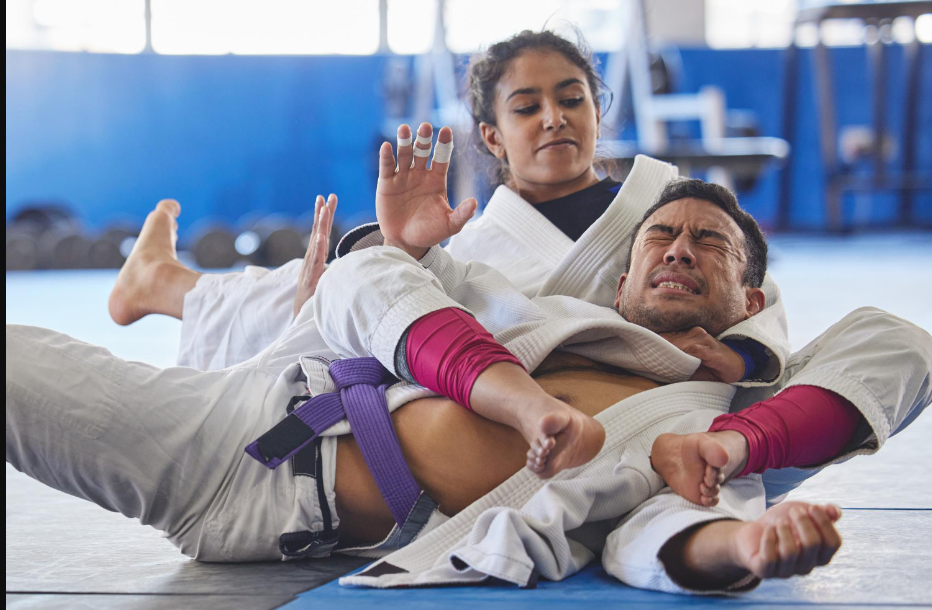
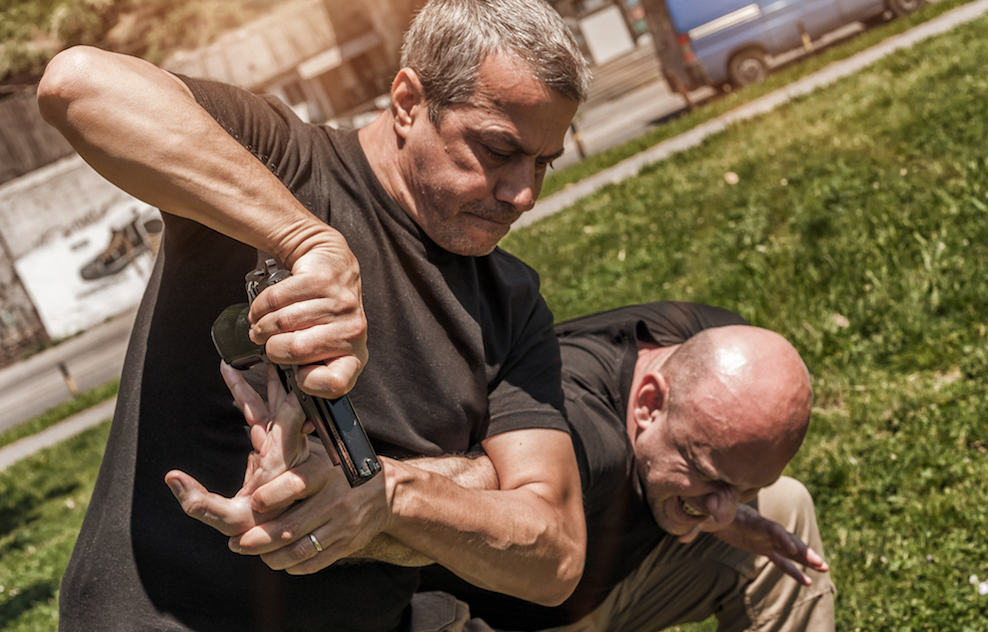
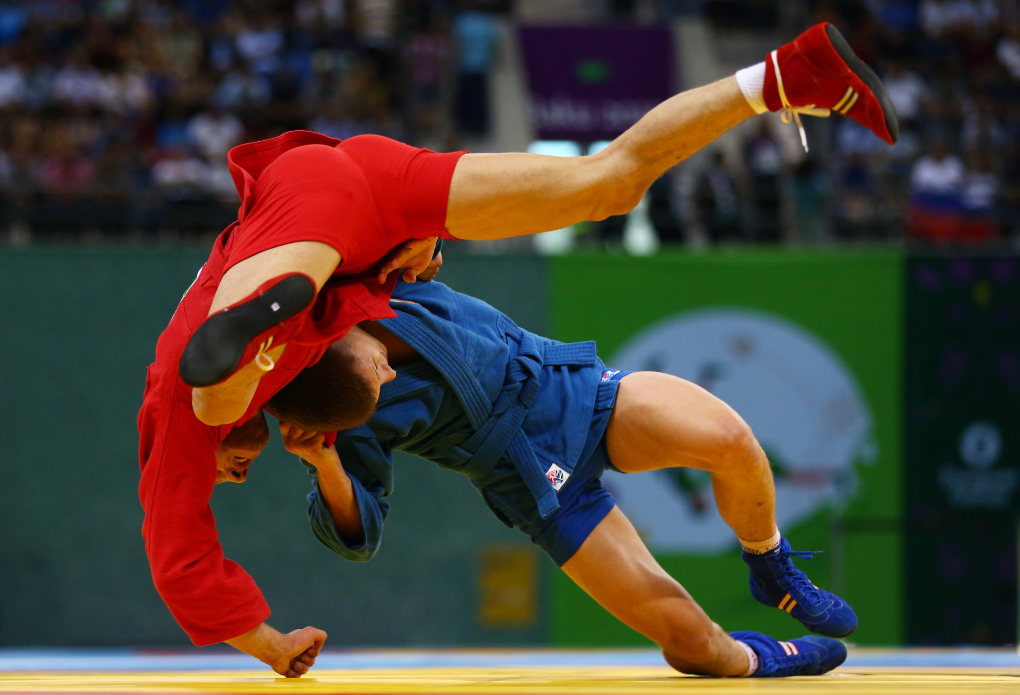
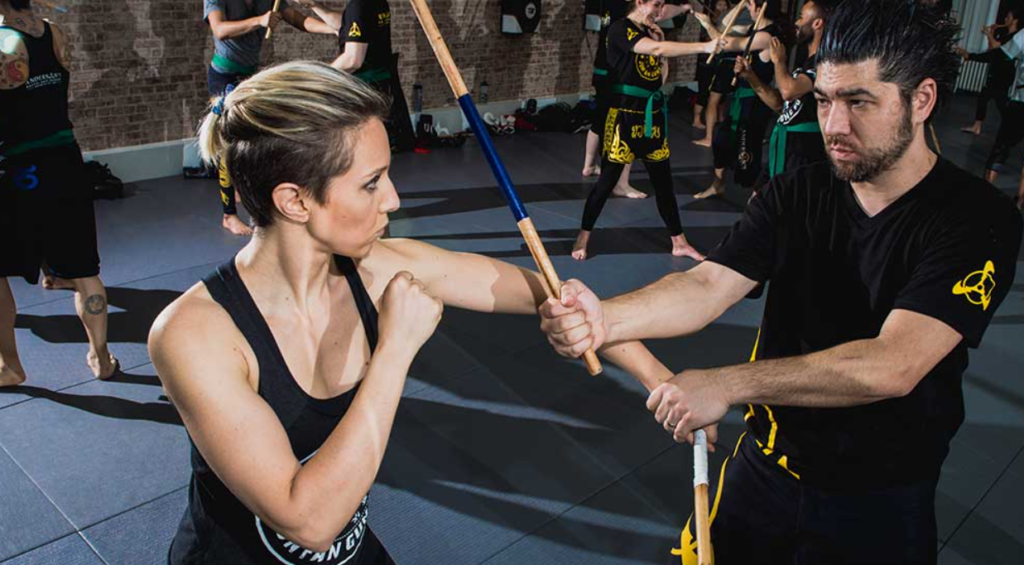
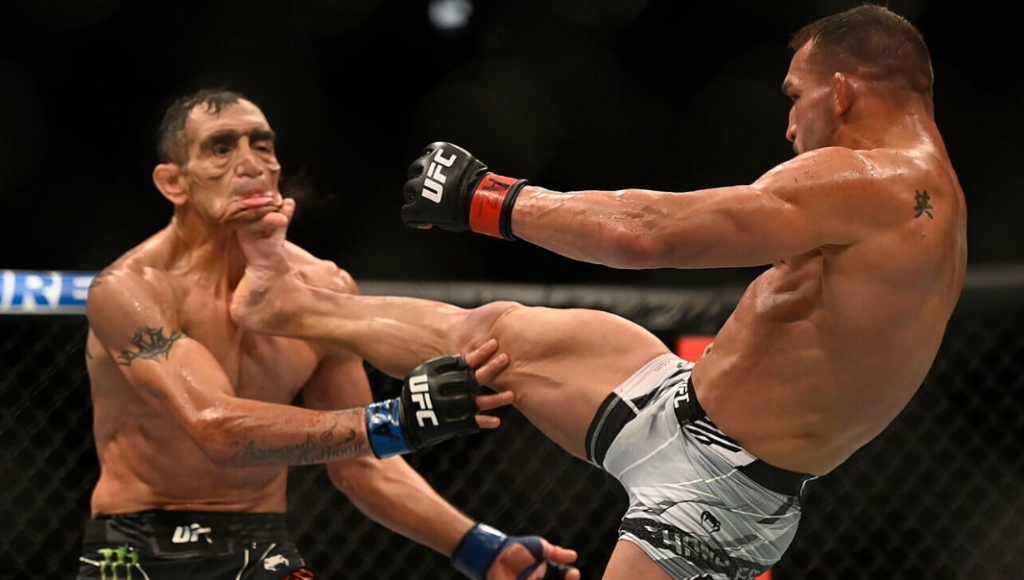
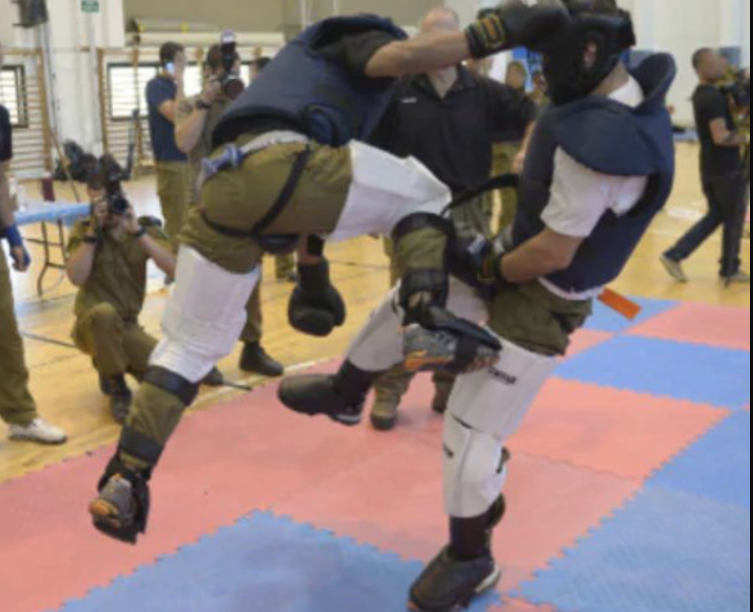


![Countering with Crab Ride Anthony Budion DVD Review [2025] Countering with Crab Ride Anthony Budion DVD Review](https://bjj-world.com/wp-content/uploads/2025/03/countering-with-crab-ride-anthony-budion-dvd-review-218x150.png)
![Closet Closed Guard Craig Jones DVD Review [2025] Closet Closed Guard Craig Jones DVD Review](https://bjj-world.com/wp-content/uploads/2025/03/closet-closed-guard-craig-jones-dvd-review-218x150.png)
![Xanadu Back Takes Levi Jones-Leary DVD Review [2025] Xanadu Back Takes Levi Jones-Leary DVD Review](https://bjj-world.com/wp-content/uploads/2025/03/xanadu-back-takes-levi-jones-leary-dvd-review-218x150.png)

![No-Gi Grapplers Guide To Front Headlock Joel Bane DVD Review [2025] No-Gi Grapplers Guide To Front Headlock Joel Bane DVD Review](https://bjj-world.com/wp-content/uploads/2025/03/no-gi-front-headlock-joel-bane-dvd-review-218x150.png)

![Dubious De La Riva Dominique Bell DVD Review [2024] Dubious De La Riva Dominique Bell DVD Review](https://bjj-world.com/wp-content/uploads/2024/10/dubious-de-la-riva-dominique-bell-dvd-review-324x235.png)

![Forging The De La Riva Guard Giancarlo Bodoni DVD Review [2025]](https://bjj-world.com/wp-content/uploads/2025/02/de-la-riva-guard-giancarlo-bodoni-dvd-review-100x70.png)

![Slip N Slide Into Victory Julián Espinosa DVD Review [2025] Slip N Slide Into Victory Julián Espinosa DVD Review](https://bjj-world.com/wp-content/uploads/2025/01/slip-n-slide-into-victory-julian-espinosa-dvd-review-100x70.png)

![Front Head Lock Kaynan Duarte DVD Review [2025] Front Head Lock Kaynan Duarte DVD Review](https://bjj-world.com/wp-content/uploads/2025/02/front-head-lock-kaynan-duarte-dvd-review-100x70.png)

![Modern Split Squat Passing Jason Rau DVD Review [2024] Modern Split Squat Passing Jason Rau DVD Review](https://bjj-world.com/wp-content/uploads/2024/11/modern-split-squat-passing-jason-rau-dvd-review-100x70.png)


![Charles Allan Price Building Workouts For BJJ DVD Review [2024] Charles Allan Price Building Workouts For BJJ DVD Review](https://bjj-world.com/wp-content/uploads/2024/09/charles-allan-price-building-workouts-for-bjj-review-100x70.png)

![Double Sleeve Guard Jon Thomas BJJ DVD Review [2024] Double Sleeve Guard Jon Thomas BJJ DVD Review](https://bjj-world.com/wp-content/uploads/2024/10/double-sleeve-guard-jon-thomas-bjj-dvd-review-100x70.png)
![Grappling Takedown Dominance Brandon Ruiz DVD Review [2025] Grappling Takedown Dominance Brandon Ruiz DVD Review](https://bjj-world.com/wp-content/uploads/2025/01/grappling-takedown-dominance-brandon-ruiz-dvd-review-100x70.png)


![Compass Kneebar System Charles Harriott DVD Review [2024] Compass Kneebar System Charles Harriott DVD Review](https://bjj-world.com/wp-content/uploads/2024/11/compass-kneebar-system-charles-harriott-dvd-review-100x70.png)
![Shin to Shin Eoghan O’Flanagan DVD Review [2025] Shin to Shin Eoghan O'Flanagan DVD Review](https://bjj-world.com/wp-content/uploads/2024/12/shin-to-shin-eoghan-oflanagan-dvd-review-100x70.png)

![360 Degrees Guard Retention Thiago Abud DVD Review [2024] 360 Degrees Guard Retention Thiago Abud DVD Review](https://bjj-world.com/wp-content/uploads/2024/10/360-degrees-guard-retention-thiago-abud-dvd-review-100x70.png)
![Top Half Guard Neil Melanson DVD Review [2025] Top Half Guard Neil Melanson DVD Review](https://bjj-world.com/wp-content/uploads/2025/02/top-half-guard-neil-melanson-dvd-review-100x70.png)
![Don’t Stand Up Chris Wojcik DVD Review [2024] Don't Stand Up Chris Wojcik DVD Review](https://bjj-world.com/wp-content/uploads/2024/11/dont-stand-up-chris-wojcik-dvd-review-100x70.png)


![Breaking Their Guard Mikey Musumeci DVD Review [2025] Breaking Their Guard Mikey Musumeci DVD Review](https://bjj-world.com/wp-content/uploads/2025/02/breaking-their-guard-mikey-musumeci-dvd-review-100x70.png)
![No-Gi Open Guard K-Guard Lachlan Giles DVD Review [2024] No-Gi Open Guard K-Guard Lachlan Giles DVD Review](https://bjj-world.com/wp-content/uploads/2024/12/no-gi-open-guard-k-guard-lachlan-giles-dvd-review-100x70.png)

![Front Headlock and Turtle Escapes Brian Glick DVD Review [2024] Front Headlock and Turtle Escapes Brian Glick DVD Review](https://bjj-world.com/wp-content/uploads/2024/11/headlock-and-turtle-escapes-brian-glick-dvd-review-100x70.png)